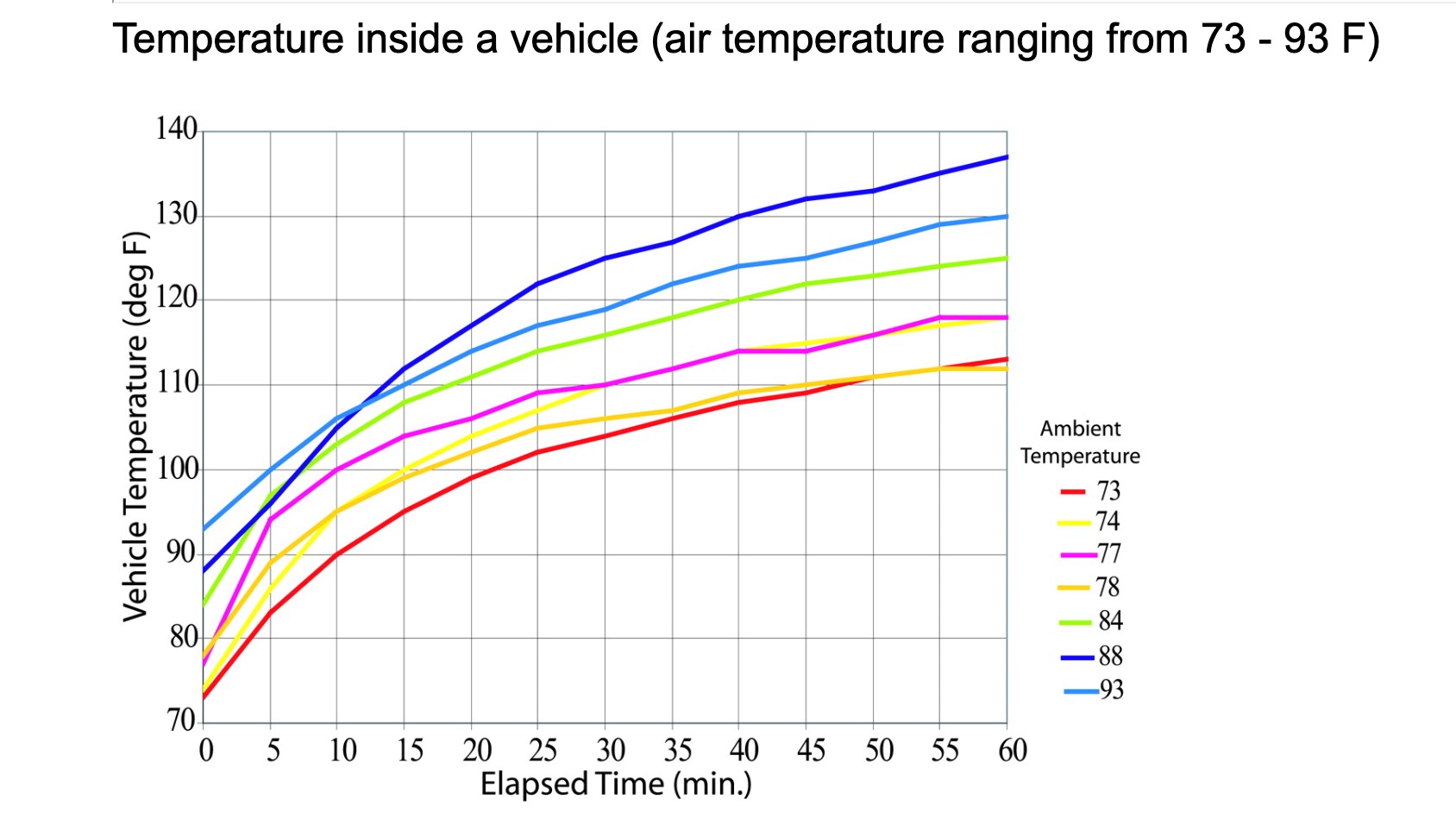It was a terrifying moment in South Texas when a baby was accidentally locked in a car on a hot day. Rescuers had to break the windshield to free the child, highlighting the extreme danger that heat can pose inside parked vehicles. Thankfully, the baby was unharmed, but this incident serves as a stark reminder of just how quickly cars can become dangerously hot.
Extreme heat is a leading weather-related cause of death in the U.S., and parked cars are particularly hazardous. Even on days that might seem relatively mild, the interior of a car can rapidly transform into an oven under the sun. So, just how hot can a car get, and how quickly does it happen?
The Rapid Rise of Car Temperatures
It doesn’t take scorching triple-digit temperatures for a parked car to become dangerous. Even on an 80-degree Fahrenheit day, the temperature inside a vehicle can climb to life-threatening levels.
According to the Centers for Disease Control and Prevention (CDC), in just 20 minutes on an 80°F day, the interior of a car can reach a staggering 109°F. This rapid temperature increase continues, reaching 118°F after 40 minutes and potentially hitting 123°F within an hour. On days with already extreme outside temperatures, like those experienced in Phoenix, these numbers escalate even further, making parked cars incredibly dangerous in a very short amount of time.
 Chart showing how quickly car interior temperature rises in minutes based on outside temperature, from National Weather Service.
Chart showing how quickly car interior temperature rises in minutes based on outside temperature, from National Weather Service.
The National Weather Service emphasizes that “cars can quickly heat up to dangerous temperatures, even with a window cracked open.” While anyone left in a parked car is at risk, children are particularly vulnerable to heatstroke and even death due to their bodies heating up faster than adults.
The Danger of Hot Surfaces Inside Your Car
It’s not just the air temperature inside a hot car that poses a threat. Objects within the vehicle can become significantly hotter than the surrounding air, creating a serious burn risk.
The National Weather Service explains that while the air temperature inside the car rises, objects like the dashboard and seats absorb solar radiation and can reach extreme temperatures. Dark dashboards or seats can easily climb to between 180°F and over 200°F. These superheated surfaces then transfer heat to the air through conduction, convection, and longwave radiation, further increasing the overall temperature inside the car.
Dr. Kevin Foster of the Arizona Burn Center highlighted this danger to NPR, noting that seat belt buckles can become hot enough to cause burns in extreme heat, especially in places like Phoenix experiencing prolonged triple-digit temperatures. “The interior of an automobile, particularly one with dark upholstery, can get to be 160 or 170 degrees,” Dr. Foster stated. “The worst thing to do is to touch something that’s metal inside the car that’s been exposed to direct sunlight like a seat belt buckle.”
Car Heat Safety: Protecting Children and Pets
The message from safety agencies is clear and consistent: “Do not leave children or pets in a closed vehicle with the windows up.” Even a few minutes can be too long when car temperatures can rise so rapidly.
Beyond this critical rule, the National Weather Service offers further advice for staying safe during heat waves, which can indirectly help mitigate car heat dangers:
- Stay hydrated: Drink plenty of water throughout the day.
- Avoid excessive alcohol: Alcoholic beverages can dehydrate you.
- Wear appropriate clothing: Opt for loose-fitting, lightweight, and light-colored clothes.
- Limit outdoor activity during peak heat: Avoid being outside during the hottest parts of the day.
- Eat light meals: Frequent, small meals are better than heavy meals in the heat.
Understanding how hot a car can get and the speed at which temperatures rise is crucial for ensuring safety. By taking precautions and never leaving children or pets unattended in parked vehicles, we can prevent tragic heat-related incidents.